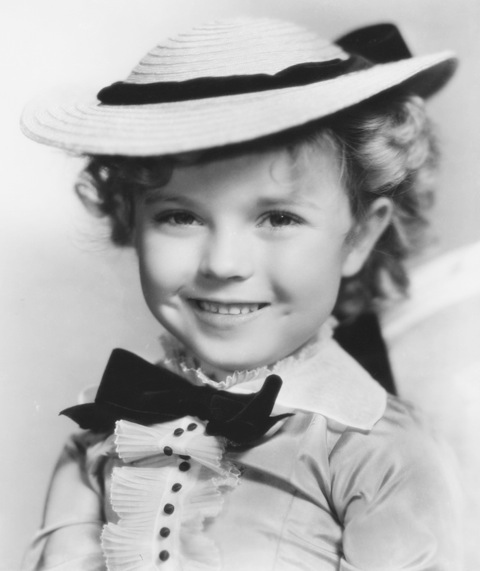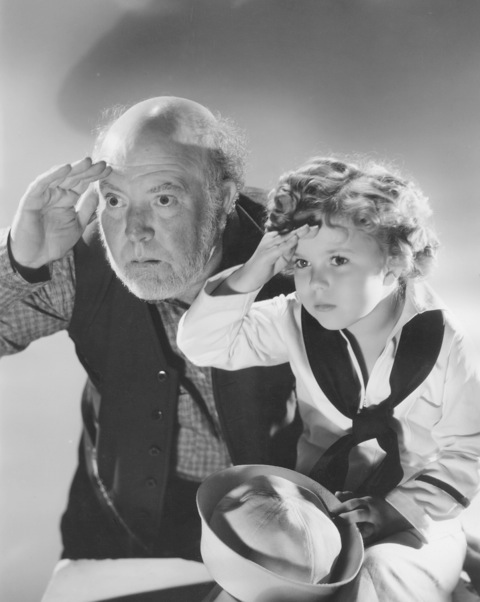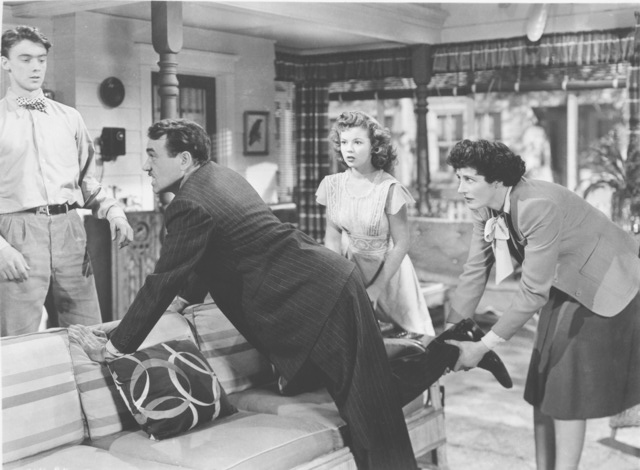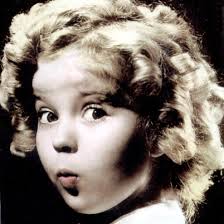By Gaylyn Studlar
How does one talk about a child star without lapsing into clichés? Shirley Temple was “the biggest little star,” the “kid who saved the studio,” and as she was called in the 1930s, “the baby who conquered the world.” Temple, who died 10 February 2014, at the age of eighty-five, was not Hollywood’s first child star and she was by no means the last, but she was inarguably the most important and certainly the most iconic. Temple became a cultural phenomenon as well as a movie star. Reported to be the most frequently photographed person of the world in the 1930s, she eclipsed the success of all previous child actors. Number-one box-office draw in the United States for four years in the mid-1930s, she was ranked within the top-ten list of box-office attractions for a record seven years by the Motion Picture Herald exhibitors’ poll. Temple was popular with audiences wherever Hollywood feature films were shown—with the notable exception of France, which never took to her. Her appeal was not just to children, and it was widely asserted that it was the adult public that made her a star.

Mrs. Gertrude Temple, a Santa Monica housewife, groomed her only daughter for stardom. She put three-year old Shirley in a dance school famous as a conduit into the film industry and styled the child’s blonde hair into the famous 55 sausage curls. After a brief stint in Poverty Row shorts, Shirley Temple rose to stardom in 1934, at age six (published age five) after drawing attention for her role in a major feature film, Fox’s Stand Up and Cheer! (1934). In 1934, Hollywood needed a visible renewal of innocence on screen in the wake of threats of a nationwide boycott of the movies by the Catholic Legion of Decency, but Fox Film Corporation was initially not sure what to do with her. The studio loaned her out to Paramount for what would be her first big hit, Little Miss Marker (1934), a Damon Runyon tale in which she plays an orphan reluctantly adopted by a misanthropic bookie (Adolphe Menjou).
Temple quickly went from featured player to “the name above the title” in musical comedies shaped for her. Temple’s profitability to the Fox Film Corporation, reorganized in 1935 as Twentieth Century-Fox, was tremendous. Her almost two-dozen star vehicles made for the studio usually cost less than $300,000 each to produce but were reputed to have grossed from $1 million to $1.5 million on first-run showings alone.
Her popularity may seem strange now, but watching child performers was nothing new. Temple was part of a tradition. Theatrical entertainments highlighting the spectacle of children were very popular in the late 19th century in the United States and Britain, and in the 1910s, Hollywood was filled with child actors, mainly in supporting roles. Temple’s films at Fox have been dismissed as sentimental goo, but there was also something about her — an exciting quality shared with many other mega-stars over the years, an unsettling of boundaries instead of just a confirming of comfortable truths, whether about gender, sexuality, race, class, or age. Other stars had it too: Greta Garbo, in her androgynous beauty; John Wayne, in his occasional display of almost feminine gentleness. Temple was a charismatic musical star, a beautiful little white girl who was an eager acolyte to black tap dance artist Bill “Bojangles” Robinson, a fearless, daring tom boy, but also a cuddly daddy’s girl.

While audiences of the 1930s were fascinated with her energy and humor, 21st century cultural commentators, including many feminist film critics, find Temple’s films redolent of pedophilia, as did British novelist and film critic Graham Greene, who was sued by Fox in 1938 for his published comments on her (he lost). Adult desire and its imposition on children is real but so too is the complexity and range of meaning and pleasures located by audiences in the performances of movie stars, including Temple. While Greene thought Temple a fleshy coquette who aroused old men unaware of their own desires, theater critic Gilbert Seldes thought that Temple communicated a refusal to be fooled, to be “bunked,” sparking men’s admiration for and identification with her as a personality. Temple was a symbol of cheerful resilience and America’s most powerfully persuasive common values. In her films she energetically embodied the promise of a more perfect future.
But love cannot last forever, and little girls grow up. In the late 1930s, the luster of both Temple’s curls and her box-office power dimmed. Temple’s contract with Fox was abrogated in 1940. She made one film Kathleen (1941) at MGM, and a feature for B-picture producer Edward S. Small, Miss Annie Rooney (1942). Both were flops, and she “retired” to finish high school. David O. Selznick offered her a lucrative contract based on his confidence in George Gallup’s Audience Research Institute: their polling suggested Temple was beloved, possessing more drawing power than many of the top female attractions in the film industry. With Selznick, Temple had a brief resurgence, including two films in which she played America’s most famous fictional teenager, Corliss Archer. Temple longed to be in more films like Since You Went Away (1944), which marked her successful return to the screen, but her boss could not mount his personal productions quickly enough to satisfy the balance sheet on her salary, and loaning her out often made him a large profit.

By the late 1940s, a young mother entering her twenties, Temple found herself type cast in the role of the teenage bobbysoxer. In 1949, she divorced John Agar, whom she had wed as a seventeen-year-old. She met Charles Black, ex-Naval officer and scion of one of California’s most socially prominent families. As recounted in her best-selling 1988 autobiography, Child Star, she was determined not to be fooled again by a man’s good looks. he had Charles Black investigated by her friends in the FBI before she walked down the aisle with him in December of 1950. They would be married until his death in 2005.
Shirley Temple reveled in her role of wife and mother (of three), but took a plunge into politics with an unsuccessful run for a congressional seat in 1967. She had a longtime interest in international affairs, first demonstrated when she asked Selznick to let her go to a world youth conference in the United Kingdom at the height of World War II (he refused). She was appointed in 1969 to the United Nations delegation by Richard Nixon and later served as ambassador to Ghana and then Czechoslovakia. In spite of skepticism, she succeeded in these and other important diplomatic assignments, winning praise from Henry Kissinger as “very intelligent, very tough-minded, very disciplined.” Here was a woman, like the child, who was not a personality to be “bunked.”
Gaylyn Studlar is David May Distinguished Professor of the Humanities at Washington University in St. Louis and author of Precocious Charms: Stars Performing Girlhood in Classical Hollywood Cinema (2013, University of California Press), which features a chapter on Temple, “Cosseting the Nation; or, How to Conquer Fear Itself with Shirley Temple.” She is a contributor to Oxford Bibliographies in Cinema and Media Studies.
Developed cooperatively with scholars worldwide, Oxford Bibliographies in Cinema and Media Studies offers exclusive, authoritative research guides. Combining the best features of an annotated bibliography and a high-level encyclopedia, this cutting-edge resource guides researchers to the best available scholarship across the field of Cinema and Media Studies.
Subscribe to the OUPblog via email or RSS.
Subscribe to only television and film articles on the OUPblog via email or RSS.
All images courtesy of Gaylyn Studlar.
The post Shirley Temple Black: not a personality to be bunked appeared first on OUPblog.




